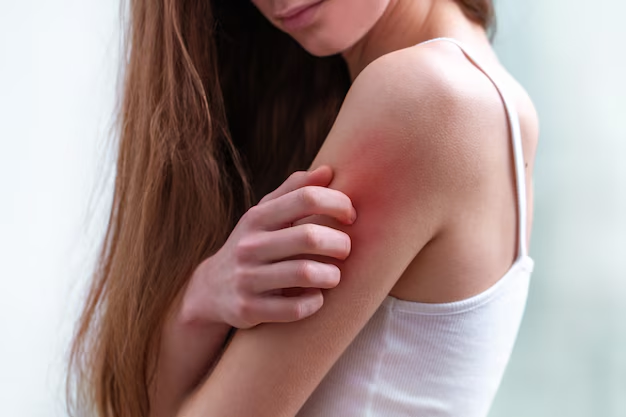Understanding Shingles: Symptoms to Watch For
Imagine waking up one morning feeling slightly under the weather—fatigue perhaps, or a mild headache. But soon, something unfamiliar starts to take hold. A tingling or burning sensation appears on one side of your body, and before you know it, a rash emerges, followed by blisters. This sequence of events might sound daunting, but it's a common scenario for those affected by shingles. Known medically as herpes zoster, shingles offers a vivid reminder of the chickenpox virus you might have thought long gone. Let’s explore the range of shingles symptoms and gain insights to help identify and understand this condition.
What is Shingles?
Before diving into symptoms, it’s crucial to comprehend what shingles is. Shingles is caused by the varicella-zoster virus, the same culprit behind chickenpox. After recovering from chickenpox, the virus lies dormant in your nerve tissue. Decades later, it can reactivate, resulting in shingles. This reactivation commonly occurs when the immune system is weakened, whether due to aging, stress, or illness.
Recognizing the Symptoms of Shingles
Shingles is notorious for its painful rash, but symptoms can vary widely between individuals. Here’s a comprehensive breakdown of what to look out for:
Early Warning Signs
- Pain and Tingling Sensation: Many people experience pain or a tingling sensation even before the rash emerges. This pain is usually localized to one area and affects one side of the body.
- Headache: A dull or throbbing headache often accompanies the early stages of shingles.
- Fever and Chills: Like many viral infections, shingles can cause a mild fever and chills.
- Fatigue: Feeling unusually tired or exhausted is a common early symptom.
The Arrival of the Rash
Blistering Rash: The hallmark of shingles is a red rash that turns into fluid-filled blisters. It typically appears in a band or strip pattern, usually around the trunk but can also manifest on the face or other areas.
Localized Distribution: Unlike chickenpox, which spreads throughout the body, shingles blisters cluster in one area corresponding to specific nerve pathways.
Painful Blisters: These blisters can cause severe pain and may burst, crust over, and heal within a few weeks.
Sensory and Neurological Symptoms
Itching and Burning: Alongside pain, a shingles rash may feel intensely itchy or cause a burning sensation.
Numbness and Tingling: The affected area might also experience numbness or a tingling, pins-and-needles sensation.
Muscle Weakness: In some cases, shingles affecting the face can lead to temporary muscle weakness.
Systemic Symptoms
Sensitivity to Touch: The affected skin area can become extremely sensitive to touch, with even clothing causing discomfort.
Swollen Lymph Nodes: As the immune system responds, you might notice swelling in nearby lymph nodes.
Complications: In severe cases, shingles can lead to complications, including vision problems if it affects the eyes.
Understanding Postherpetic Neuralgia
A significant complication of shingles is postherpetic neuralgia (PHN), a condition where pain persists even after the rash has healed. PHN is more common in older adults and can severely impact quality of life. Symptoms of PHN include:
- Chronic Pain: Long-lasting pain in the area where the shingles rash appeared.
- Heightened Sensitivity: Even a mild touch can cause severe discomfort.
- Sleep Disturbances: Persistent pain can interfere with sleep patterns.
Who is at Risk for Shingles?
Anyone who has had chickenpox is at risk for developing shingles, but certain groups are more susceptible:
- Age: Shingles is more common in individuals over 50.
- Weakened Immune System: Diseases such as HIV/AIDS, cancer, or immune-suppressing drugs can increase risk.
- Stress: High stress levels might contribute to the virus reactivating.
- History of Chickenpox: Without previous chickenpox exposure, shingles is highly unlikely.
Prevention and Vaccination
Fortunately, there are vaccines available to help prevent shingles or reduce its severity:
- Shingrix Vaccine: A newer vaccine recommended for adults over 50 or those with weakened immune systems.
- Zostavax: An older vaccine still in use, though less effective than Shingrix.
Getting vaccinated can significantly reduce the risk of developing shingles and its complications.
Managing Symptoms at Home
While medical guidance is essential, certain home remedies may provide relief:
- Cool Compresses: Applying a damp, cool cloth to the rash can soothe pain and itching.
- Calamine Lotion: This can help ease itching when applied gently to the affected area.
- Proper Hygiene: Keeping the rash clean and dry minimizes infection risk.
- Comfortable Clothing: Wearing loose-fitting clothes can prevent irritation from friction.
How Shingles Differs from Chickenpox
Understanding the difference between chickenpox and shingles can offer clarity:
- Chickenpox generally affects children with a widespread itchy rash, while shingles occurs in adults with a localized, painful rash.
- The chickenpox virus spreads easily between individuals, whereas shingles is not directly transmissible.
When to Seek Medical Attention
Immediate medical evaluation is advisable if you experience:
- Severe Pain: Intense, unmanageable pain that disrupts daily activities.
- Eye Involvement: If the rash appears near or in the eye, it can threaten vision.
- Compromised Immune System: Individuals with weakened immune systems should seek prompt medical care.
Final Insight
Shingles can be both physically and emotionally taxing, but understanding its symptoms is the first step towards effectively managing the condition. Whether you’ve just noticed early symptoms or are in the midst of a full-blown rash, recognizing these signs empowers you to take informed action and seek appropriate care.
Summary of Key Takeaways and Tips:
- 🔍 Early Symptoms: Look for pain, tingling, and a potential rash on one side of the body.
- 🌡 Rash and Blisters: A distinctive blistering rash often appears in a localized area.
- 🚩 Red Flags: Seek medical help immediately if the rash involves your eyes or if pain becomes severe.
- 🛡 Prevention: Consider the shingles vaccine, especially if you’re over 50.
- 🏠 Symptom Relief: Use cool compresses and calamine lotion for at-home relief.
By staying informed, you can navigate shingles with greater confidence and seek the support you need when it matters most.
